Hidden within the vast expanse of the South Pacific is the island nation of Tuvalu. Despite its small size, Tuvalu holds a unique position in the world – it is regarded by many as the narrowest country on Earth.
Geography of Tuvalu
Tuvalu consists of a chain of nine atolls and small islands, covering a land area of only 26 square kilometers. It stretches over a vast ocean area, encompassing about 900,000 square kilometers of the Pacific. The country includes nine atolls – Funafuti, Nukufetau, Nukulaelae, Nanumea, Nanumaga, Niutao, Nui, Nukufetau, and Vaitupu.
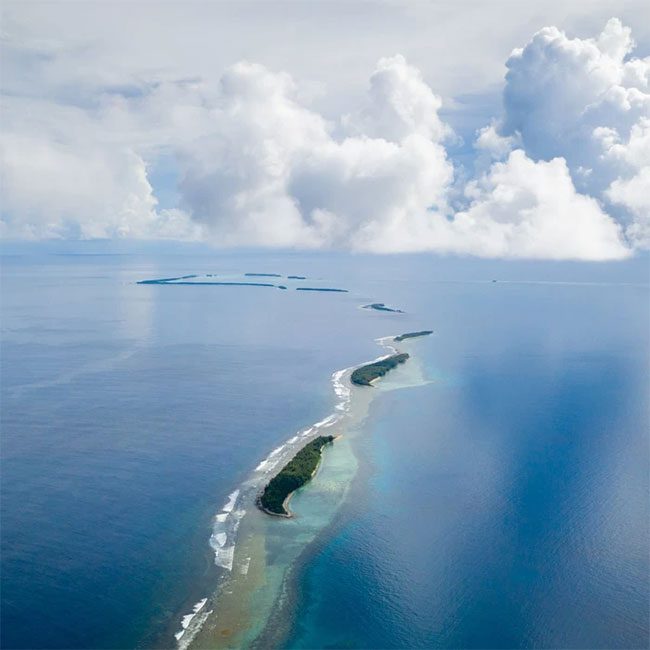
Tuvalu consists of a chain of nine atolls and small islands.
Tuvalu is known as one of the smallest and most isolated countries in the world, formerly referred to as the Ellice Islands and located in the waters between Hawaii and Australia. This isolation has made it one of the most sought-after destinations in the Pacific.
The narrowness of Tuvalu is a defining characteristic of the nation. It has an average width of only 1.8 kilometers, with the widest point being just 5 kilometers. This unusual narrowness is a result of its location on low-lying atolls, where land is surrounded by vast ocean waters.
The geography of Tuvalu lends it a unique and tranquil charm. With pristine sandy beaches, crystal-clear turquoise waters, and lush tropical vegetation, the country showcases spectacular natural beauty. However, this special geographical position also presents significant challenges and vulnerabilities, especially concerning climate change and rising sea levels.
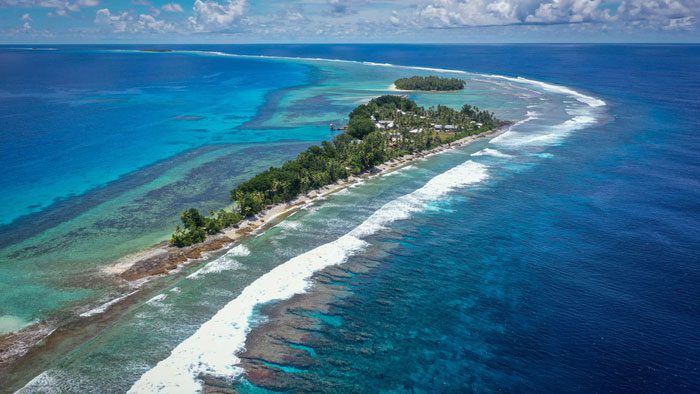
The geography of Tuvalu lends it a unique and tranquil charm.
As a peaceful island nation that has not been commercialized, Tuvalu is home to beautiful attractions such as coral islands, picturesque lagoons, and distinctive cultural customs.
Challenges from Tuvalu’s Unique Terrain
The narrow land area of Tuvalu presents the country with a multitude of environmental and socio-economic challenges. Rising sea levels pose a significant threat, as the highest point in the country is only 4.6 meters above sea level. Encroaching saltwater endangers freshwater resources, agriculture, and infrastructure in Tuvalu, making the country particularly vulnerable to the impacts of climate change.
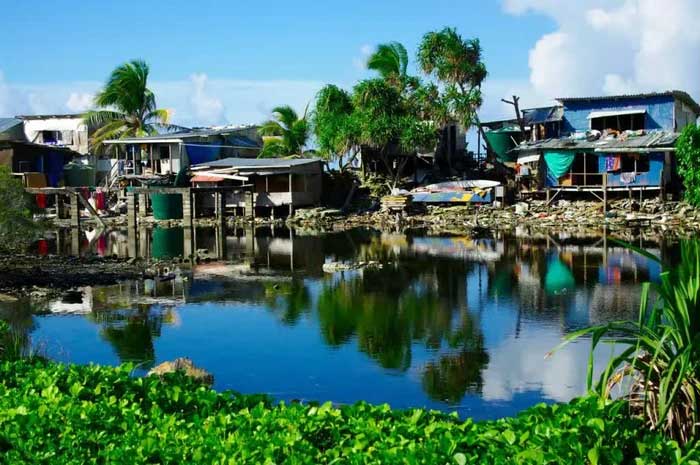
The total land area of this country is only 26 square kilometers, with a population of approximately 11,000 concentrated on the main island, which is also the capital, Funafuti. The island has only one airport with two flights per week; after landing in the capital, tourists travel to other islands by ferry.
The limited land area also complicates urban development and population growth. With restricted space, densely populated areas face challenges such as housing shortages, limited infrastructure, and constrained economic opportunities. The narrow land area of the country necessitates careful planning and sustainable resource management to ensure the welfare and livelihoods of its people.
Additionally, the narrowness of Tuvalu poses logistical challenges for trade and transportation. The lack of extensive road networks and reliance on maritime transport has limited connectivity between the islands and the outside world. The country heavily depends on imports, making it vulnerable to disruptions in the supply chain. Addressing these challenges requires innovative solutions and international cooperation.
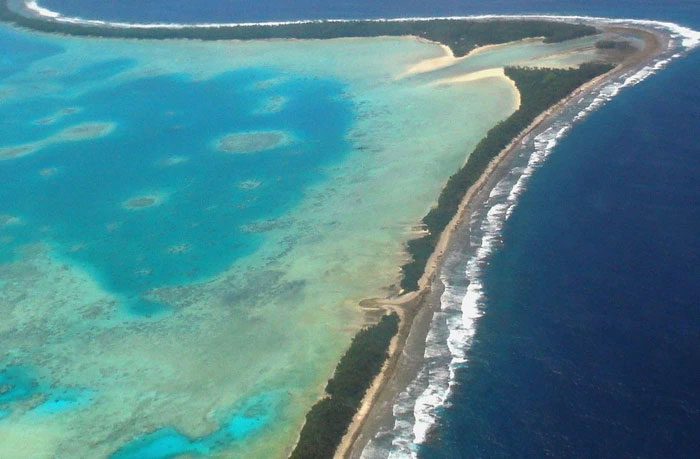
This island nation is currently on alert due to its vulnerability to rising sea levels caused by climate change. The highest point in the country is just 4.6 meters above sea level, meaning Tuvalu faces the risk of “disappearing” if global warming continues to worsen.
Resilience and Adaptation
Despite the numerous challenges posed by the narrow terrain, the people of Tuvalu have demonstrated remarkable resilience and adaptability. They have developed a deep connection with their environment and a strong sense of community. Traditional knowledge and practices play a vital role in navigating the constraints of their narrow land, including sustainable agriculture, water management, and fishing techniques.
Tuvalu has also become one of the strongest advocates on the global stage for climate action and the protection of vulnerable nations. The leaders of this island nation are actively engaged in international climate negotiations, highlighting the urgent need for emission reductions and support for adaptation measures.
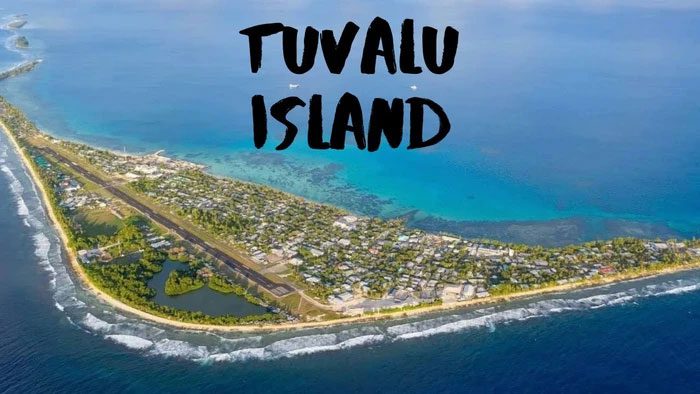
The first settlers of this land were likely Polynesians from Samoa in the 14th century, during the process of land exploration. A small group also came from Tonga, the Cook Islands, Rotuma, and the Gilbert Islands.
The challenging circumstances in Tuvalu serve as a poignant reminder of the impacts of climate change and the necessity for global solidarity in addressing its effects.
Efforts are underway to promote sustainable development and enhance the resilience of Tuvalu. Initiatives include adopting renewable energy sources, such as solar energy, to reduce dependence on imported fossil fuels. Coastal protection measures, including building seawalls and conserving natural barriers, aim to mitigate the impacts of rising sea levels.
The Spanish were the first Europeans to discover this archipelago in 1568. With the expansion of Europe, by 1892, the Ellice Islands were under British protectorate, later becoming part of the Gilbert and Ellice Islands colony in 1916. By the 1960s, racial and employment conflicts intensified between the populations of the two islands. The demand for independence from the people of Ellice led to a referendum in 1974, and under the unity of the people, the archipelago became a separate territory in 1975-1976. By 1978, the nation declared independence as Tuvalu.




















































